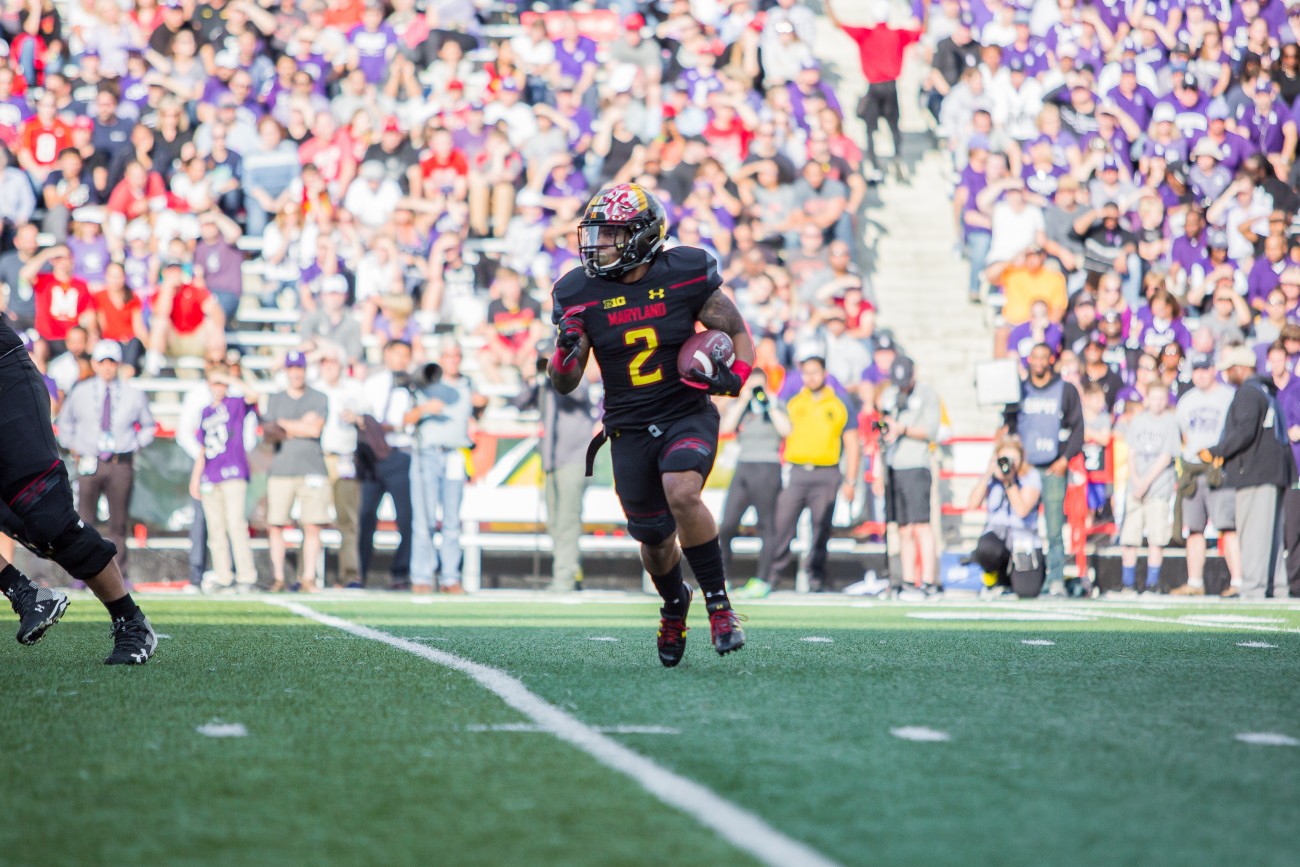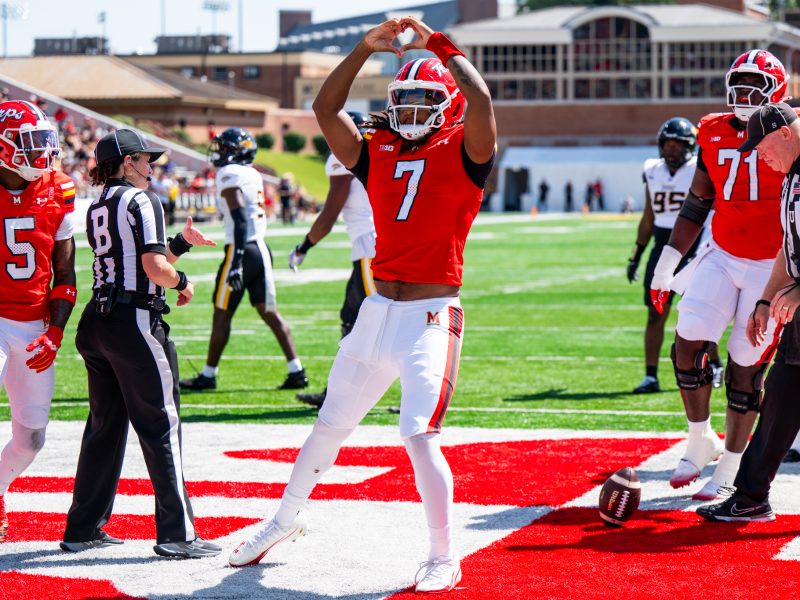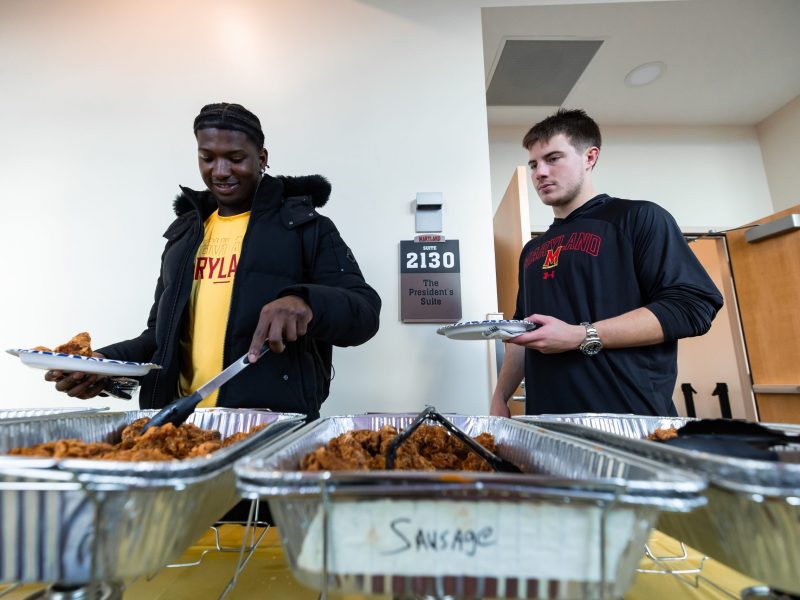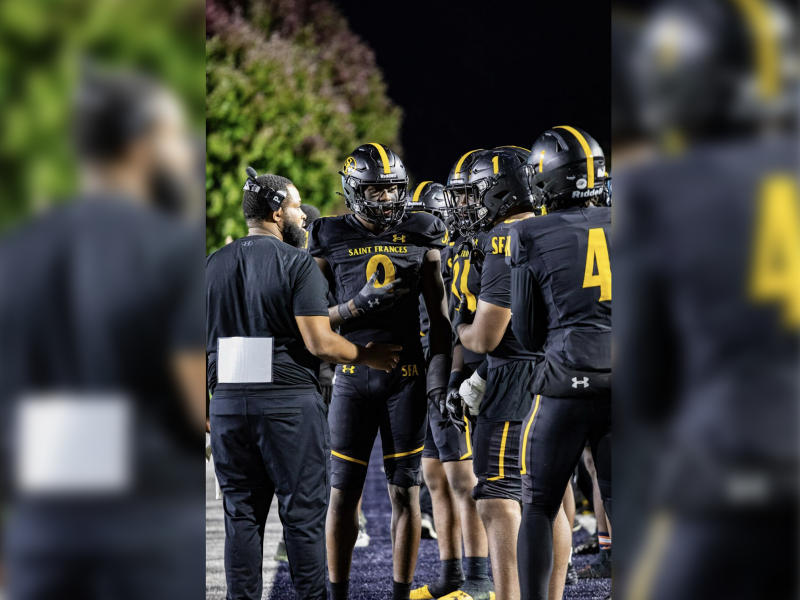The Maryland football team has followed a similar formula through its three wins this season: hand the ball to its elusive running backs and let them do the rest.
The Terps ran for 263 yards against then-No. 23 Texas, 367 against Towson and 262 in their lone Big Ten win against Minnesota. But the strategy that drove Maryland’s early success has doomed the team in its past two games.
Ohio State gobbled up whoever was in Maryland’s backfield last Saturday, limiting coach DJ Durkin’s squad to 50 rushing yards. Against a weaker Northwestern defense on Saturday, the Terps racked up just 85 yards on the ground in a 37-21 loss.
If Maryland wants to win three more games and become bowl eligible, it’ll need its running game to return to top form.
“They were taking the running backs out of the game with what they were doing defensively,” Durkin said. “If you can do that in a game, you have to be able to throw the ball and execute. At times we did, but we didn’t do it consistently. There were chances for some big plays with third downs that we didn’t convert.”
[Read more: Maryland football’s 37-21 loss to Northwestern diminishes bowl hopes]
Last season, Maryland started three different quarterbacks and never established a rhythm through the air. But the Terps’ ground game led the team to a bowl game, as Maryland ran for the fourth-most yards in the Big Ten behind Ty Johnson and Lorenzo Harrison.
Those two are back in the fold this season, but the results haven’t been the same lately.
While Johnson ran for at least 120 yards in three of the Terps’ first four games, he has combined for 77 rushing yards over the past two weeks.
Harrison, who would’ve likely broken Maryland’s freshman rushing yards record last season if he didn’t get suspended in November after an airsoft gun incident, hasn’t looked like himself this season. He’s averaging 40 rushing yards per game, and his yards per carry is half of what it was in 2016.
Of course, the Terps’ uncertainty under center hinders the running game. Maryland relied on dual-threat quarterbacks Tyrrell Pigrome and Kasim Hill in its first two contests before both signal-callers tore their ACLs. Third-string quarterback Max Bortenschlager appeared sharp against Minnesota, but he’s since completed 40 percent of his passes.
“You do better when you’re flowing in a drive instead of having chopped-up drives,” wide receiver DJ Moore said. “When you go out three-and-out, it takes you off track what you plan on calling. If you have eight- to 10-play drives, that means you’re actually doing something to move the ball down the field.”
Moore was the catalyst when the Terps did move the ball against Northwestern, as the junior recorded career highs in receptions (12) and receiving yards (210) while reeling in two touchdowns. But even one of the best individual performances in recent Terps history wasn’t enough without an effective running game.
[Read more: Maryland fans tossed footballs around the stands after Northwestern’s kicker hit them over the net]
Center Brendan Moore said the Wildcats, who entered Saturday surrendering 135 rushing yards per game, used blitzes to halt Maryland’s rushing attack. Northwestern linebacker Brett Walsh added the Wildcats defense anticipated outside runs, helping it limit Johnson and Harrison’s explosiveness.
Four of the Terps’ final six foes are ranked, meaning it will be difficult to get the offense back on track. But beginning next weekend at No. 7 Wisconsin, they’ll need to find a way to pave running lanes for their tailbacks.
If that doesn’t happen, Maryland’s bowl hopes will vanish faster than the Wildcats devoured Johnson in the backfield Saturday afternoon.



